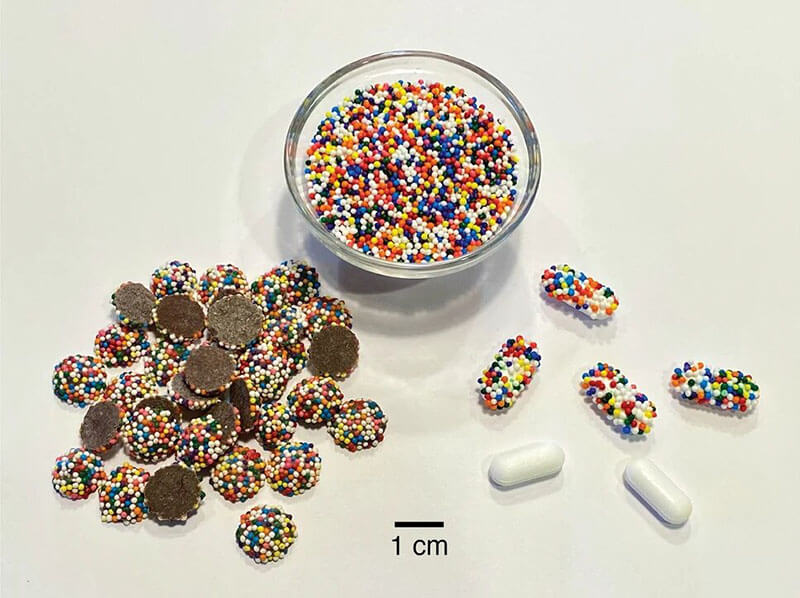William Grover, a professor at the University of California at Riverside, developed the technology for a unique
The researcher used edible glue tocake decorating to cover paracetomol capsules with tiny nonpareils. A special algorithm converts a photo of a candy-coated tablet into a set of text strings that is stored in a database. The consumer can also take a photo of the tablet and check the authenticity of the medicine in the database.
“Using computer simulation of largeCandyCode libraries, I found that a company could produce 100,000 trillion tablets with a unique code. That's about 41 million pills for every person on Earth, each of which can be uniquely identified by the CandyCode,” says Grover.
 Photo: Grover, Scientific Reports
Photo: Grover, Scientific Reports
The researcher notes that the likelihood thatThe randomly generated candy pattern will ever be repeated is practically zero, so each of the pills is unique and will never be duplicated by accident.
“Oddly enough, I found that the capsulesCoated with CandyCode are more pleasant to swallow than conventional tablets, confirming Mary Poppins' classic observation of the relationship between sugar and drugs,” adds Grover.
The scientist believes that an increase in the numberthe colors used or the sizes and shapes of the candies will further expand the "security" of the code. Such technology, according to the author, can also be used to verify the authenticity of other products, which are often counterfeited. Grover says bottle and vial caps, for example, could be coated with glue and dipped in nonpareils to ensure the integrity of perfume or wine, and clothing or bag tags could be similarly coated with glitter.
 Photo: Grover, Scientific Reports
Photo: Grover, Scientific Reports
Read more
Look at the "silent" drone with a new generation of ion propulsion
Flashes of energy for thousands of years of life: scientists have understood how they appear on the Sun
NASA has published the "sounds" of a black hole: anyone can listen to them